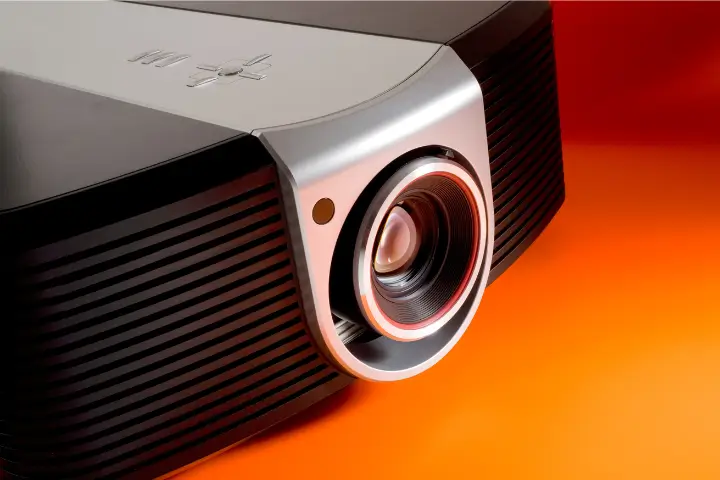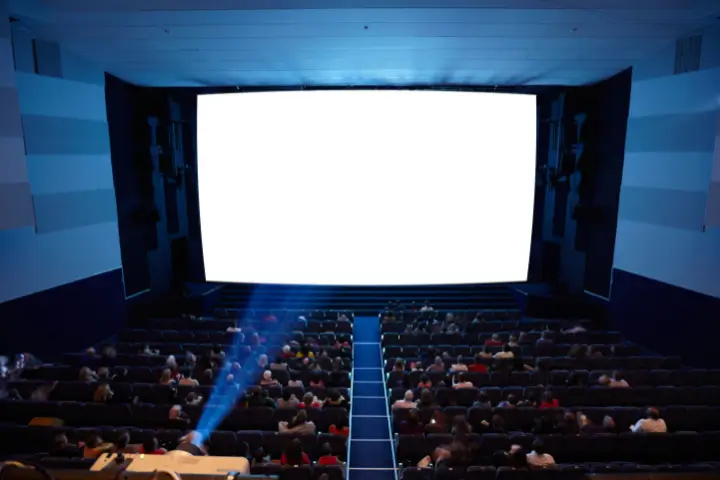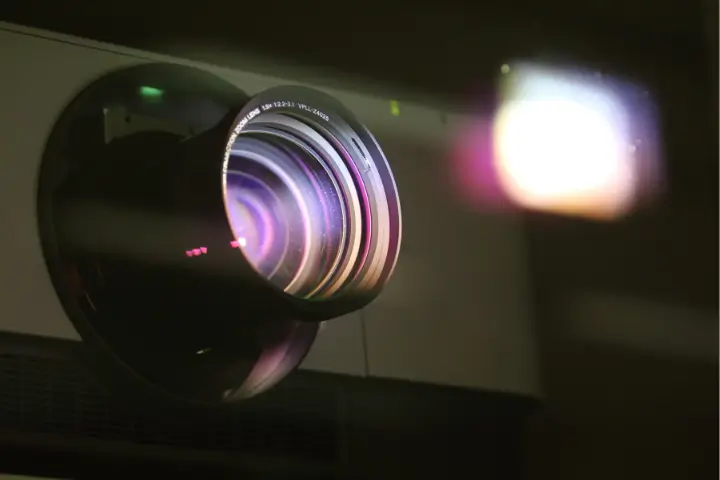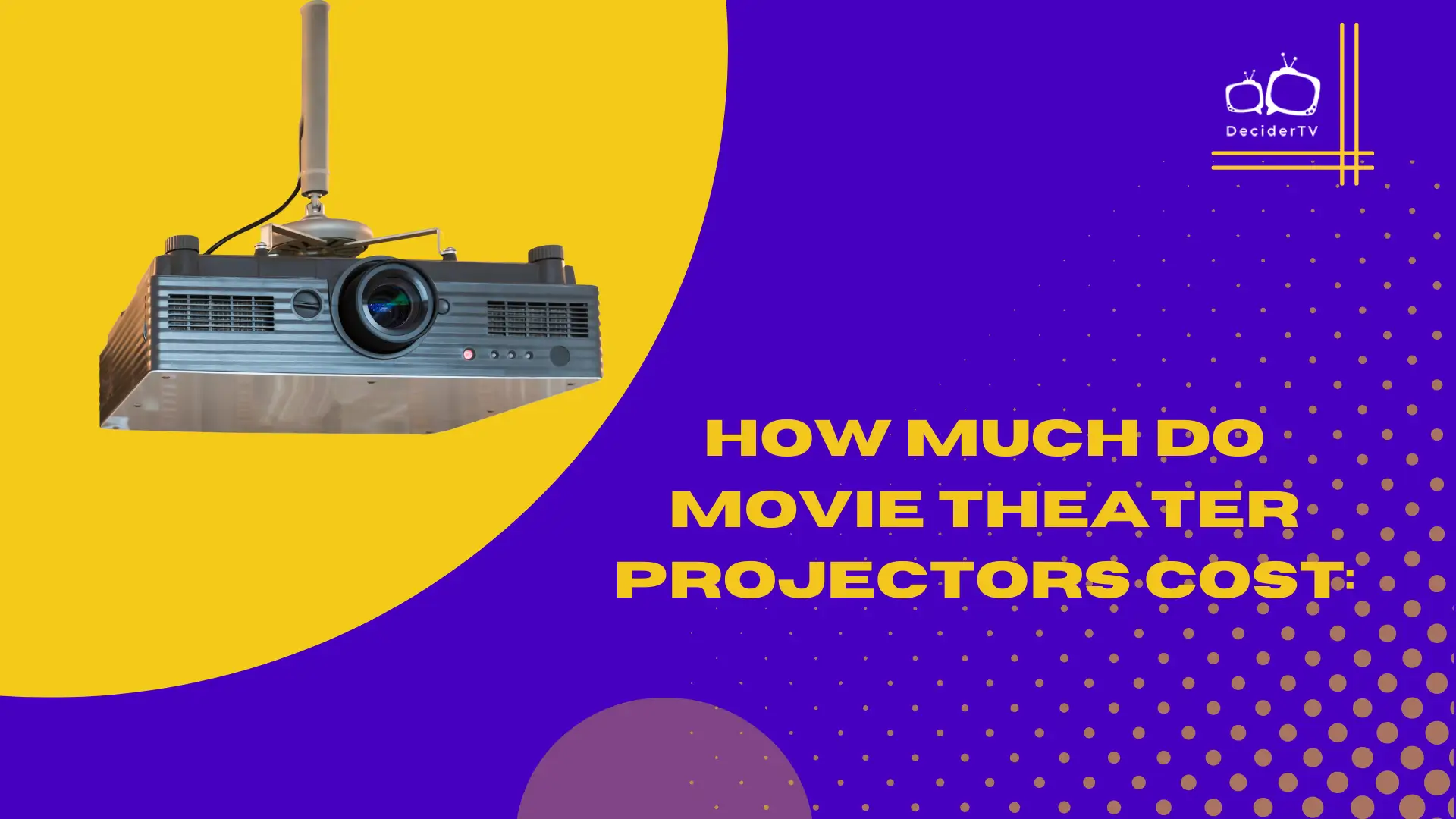When you’re considering the costs associated with running a movie theater, one of the most significant investments is the projector. The price of a movie theater projector can vary greatly depending on several factors, including the technology, quality, and features it offers. Typically, a high-end digital cinema projector, which is what you’d find at modern movie theaters, can set you back anywhere from $65,000 to $200,000. Let’s dive deep into How Much Do Movie Theater Projectors Cost.
This range reflects the advanced technology that these projectors use. Traditional film projectors have largely been phased out in favor of digital systems that provide better picture quality and more versatility in terms of the content they can show. Movie theater projectors are at the heart of the cinematic experience, which is why they command such a premium. They’re engineered to support high resolutions, cope with various light conditions, and deliver the kind of image clarity and detail that pull you into the story unfolding on the screen.
If you’re in the market for this kind of equipment, it’s important to consider the long-term costs as well. These include maintenance, lamp replacements if it’s not a laser projector, and the necessary audiovisual infrastructure that supports optimal projector performance. Understanding the costs and functionality can guide your decision, ensuring that the projector you choose meets your theater’s standards for quality and audience satisfaction.
Types of Movie Theater Projectors
When you’re exploring movie theater projectors, you’ll encounter various types, each offering different features and capabilities. Here are the primary categories:
Remember, the technology and specifications you choose directly affect the visual quality and ambiance of your theater—so select wisely based on your audience’s demands.
Factors Influencing Projector Costs

When you’re in the market for a movie theater projector, a variety of factors can greatly affect the price. Understanding these aspects will help you evaluate the options and make an informed purchase.
Model and Brand
The model and brand of the projector are primary factors affecting cost. High-end brands like Sony, BenQ, and JVC are known for their quality, and thus command a higher price. For instance, you can expect to pay anywhere between $3,000-$7,000 for a home projector from these reputable manufacturers.
Resolution and Brightness
Resolution and brightness are crucial for picture quality. Mainstream movie theaters generally use 2k or 4k projectors, with resolutions of 2,048×1,080 or 4,096×2,160 pixels respectively. Higher resolutions offer clearer, more detailed images, which increases the projector’s cost. Similarly, a projector’s brightness, measured in lumens, is important in larger spaces. High brightness projectors are more expensive, as they ensure the image remains visible in various lighting conditions.
3D Capability
Projectors with 3D capability can display content in three dimensions, adding depth to the viewing experience. This technology requires more advanced and expensive hardware components, which can raise the cost of the projector significantly.
Connectivity Options
Connectivity options enhance the projector’s versatility and usability. The inclusion of multiple HDMI ports, USB inputs, and wireless connectivity such as Wi-Fi or Bluetooth can affect the price. Advanced connection options provide you the convenience to integrate the projector seamlessly with other digital systems.
Price Range for Commercial Movie Projectors

When you’re in the market for a commercial movie projector, the cost can vary significantly. The price largely depends on the projector’s technology, features, and the size of the auditorium it will be used in.
Entry-Level Projectors
For smaller venues or less frequent usage, you can find entry-level projectors that usually start at around:
- $20,000 to $35,000
These projectors are suited for smaller screens and provide a decent image quality for casual or non-commercial viewings.
Mid-Range Projectors
Mid-range projectors, which cater to standard-sized movie theaters and provide a good balance of quality and cost, typically range from:
- $40,000 to $70,000
These are the workhorses of the cinema industry, offering enhanced brightness and image quality suitable for most commercial applications.
High-End Projectors
At the top end are premium projectors designed for the largest screens and the highest quality presentation, which come with price tags that reflect their advancements in technology and features:
- $75,000 to $200,000
These projectors offer cutting-edge features like 3D capabilities, ultra-high brightness, and superior resolution. Suitable for large cinemas and IMAX theaters, they represent the pinnacle of movie projection technology.
Cost Comparison: Traditional vs. Digital Projectors
When you’re evaluating the costs between traditional and digital projectors for your movie theater, it’s important to understand the distinctions. Traditional film projectors, once the industry standard, have seen a decrease in usage due to the rise of digital technology.
Traditional Projectors:
- Initial cost: Can be less expensive upfront, but this typically applies to used equipment, as new film projectors are now rare.
- Maintenance: Higher maintenance costs due to mechanical parts and film degradation.
- Operational costs: Requires purchase of film copies, which adds to the ongoing expense.
Digital Projectors:
- Initial cost: Higher initial investment; prices range depending on resolution and projection technology, but you can expect a cost between $65,000 to $200,000.
- Maintenance: Generally lower than traditional, as there are fewer moving parts.
- Operational costs: Reduced operational costs over time since digital files are used instead of physical film reels.
Projector Type
- Traditional
- Digital
Initial Cost
- Lower
- Higher
Maintenance
- Higher
- Lower
Operational Costs
- Higher
- Lower
While the outright purchase price of digital projectors is steeper, they are favored due to their long-term benefits and compatibility with modern technology standards. Remember, the choice between traditional and digital should also reflect the type of experience you aim to offer your audience.
Installation and Maintenance Costs
When you invest in a movie theater projector, your expenses will extend beyond the initial purchase. Installation and regular maintenance are necessary for optimal performance and longevity.
The cost of installation depends on various factors:
Expect the installation process to range from a few thousand dollars to potentially over $10,000 for high-end theaters with intricate setups.
Maintenance is critical to keep your projector functioning correctly. Here is an estimated breakdown:
These costs help ensure that your projector performs well and lasts for its intended lifespan, avoiding costly down-time or premature replacement. It’s crucial to include these in your budgeting to avoid surprises.
Additional Equipment and Accessories

When outfitting your movie theater with a projector, consider the necessary additional equipment and accessories:
Avoiding underestimated budgets is crucial. Always research and account for these critical components to complement your movie theater projector effectively.
Projector Lifespan and Long-Term Value
When considering the purchase of a movie theater projector, you must evaluate the lifespan and long-term value of your investment. Different types of projectors have varying lifespans which are influenced by usage patterns and maintenance.
Lamp Projectors
Traditional lamp projectors generally offer around 3,000 hours of operation in eco-mode, and about 2,000 hours in a brighter setting. Replacement lamps are a necessary cost factor in the overall value calculation.
Laser Projectors
On the other hand, laser projectors provide a significantly longer life, often exceeding 20,000 hours. They boast a higher initial price but may offer greater value over time due to fewer replacements.
Your usage also plays a critical role. If you frequently run your projector, understanding that intensive use may lead to quicker wear is essential. Balancing operational hours with scheduled maintenance can help extend the lifespan.
Environmental Factors
Keep in mind that the environment in which you operate the projector affects its longevity. Factors such as dust, humidity, and temperature control are pivotal; proper ventilation and cleaning can preserve your projector’s function.
Lastly, when you’re calculating long-term value, look beyond the baseline cost. Consider the warranty and the manufacturer’s customer service reputation. The support you receive can be invaluable, ensuring that your projector remains a profitable and functional part of your movie theater for years to come.
Financing Options for Theater Owners
When considering the purchase of a high-quality movie theater projector, which can range anywhere from $65,000 to $200,000, exploring financing options is a practical approach. Affordable solutions enable you to integrate cutting-edge technology into your cinema without the immediate financial burden.
Leasing
This option lets you use the projector for a set term, during which you make monthly payments. At the lease’s end, you may have the choice to purchase the projector. Leasing can be an excellent way to manage cash flow and keep technology up-to-date.
Loans
A traditional loan requires a down payment and subsequent monthly payments. This is suitable if you wish to own the projector outright and can secure a loan with favorable terms.
Vendor Financing
Some companies, like Digital Cinema Projectors, offer bespoke financing directly. Terms may be more flexible, tailored to your specific business needs.
Key Considerations for Financing
- Interest Rates: Compare to find the best rate.
- Payment Terms: Consider what payment schedule aligns with your revenue cycles.
- Tax Implications: Determine how each option affects your tax liability.
- Technology Upgrades: Look for plans that allow upgrades to newer models.
By carefully evaluating these options and considerations, you can make a sound financial decision that ensures the show goes on at your movie theater.
Best Movie Theater Projectors – Top 5 Picks
1. FUDONI Projector with 5G WiFi and Bluetooth
Product Specifications

- Fast Stable 5G WiFi
- Bluetooth 5.1
- 1080P Full HD Projector
- 300″ Giant Screen
- 50% ZOOM Function
We think you’ll appreciate this projector’s stellar connectivity and image quality for your movie nights, whether indoors or outdoors.
Having recently hosted an outdoor cinema event, our experience with the FUDONI Outdoor Projector was largely positive. The setup process was a breeze thanks to its dual-band WiFi, allowing us to stream our favorite flicks without any noticeable lag. The Bluetooth connectivity also meant we could easily enhance the sound by pairing the device with our premium Bluetooth speakers, creating an immersive audio environment that complemented the crisp visuals on the included 100” screen.
The projector’s 1080P resolution was a game-changer for us. We marveled at how it brought a true cinematic experience right into our backyard. Nighttime gatherings were transformed as the projector illuminated our outdoor screen with vibrant colors and striking contrast. The 50% zoom function proved to be particularly useful, allowing us to adjust the screen size without moving the projector an inch – a feature that’s practical when space is at a premium.
Finally, we noticed that curation of content is key. While the projector couldn’t mirror some popular streaming services due to copyright restrictions, this hurdle was easily cleared by using an HDMI-connected streaming stick. The built-in HiFi stereo speakers did a respectable job, but in open outdoor spaces, the volume was less impactful, leading us to prefer our external sound equipment. Additionally, the detachable dust filter is a thoughtful touch, ensuring longevity, but it did require us to perform regular maintenance—something to keep in mind.
Pros
- Strong wireless performance with both 2.4G and 5G WiFi
- Vivid picture quality with full HD resolution and support for 4K
- Generous 300-inch projection capacity with a convenient zoom function
Cons
- Incompatible with certain streaming services during screen mirroring
- Built-in speakers may be insufficient for large outdoor spaces
- Dust filter requires regular maintenance to keep performance optimal
2. FUDONI Outdoor Projector
Product Specifications

- 5G WiFi
- 5.1 Bluetooth Function
- Native 1080P
- Zoom Function
- Loud Speakers
We think this projector is a solid choice for outdoor movie nights and offers an array of easy-to-use features.
Experiencing movies on the big screen in our own backyard has been nothing short of spectacular with the FUDONI Outdoor Projector. We appreciated how the dual-band WiFi quickly linked up, sparing us from the tedium of buffering or connection drops. The images were crisp, thanks to the 1080P resolution, which made every scene pop with clarity and color. It was like having a cinema in our very own space.
The size versatility brought by the zoom function was a game-changer, allowing us to tailor the viewing size to our liking without having to move the projector around. Setting up for a movie night became an effortless affair. Simplicity like this really added to the overall value of our gatherings.
However, we did notice the volume from the built-in speakers wasn’t quite enough to combat the ambient noise of an outdoor setting. While the image quality kept us glued to the screen, we found that pairing the projector with an external Bluetooth speaker gave us that immersive sound experience we were looking for. Also, when trying to stream directly from video apps via screen mirroring, we encountered some hiccups, which were a bit of a letdown for streaming enthusiasts.
All in all, we were pleased with the performance of the FUDONI Outdoor Projector. It was straightforward to set up and operated smoothly for the most part. The occasional connectivity issue with HDMI was the only technical fault we had to work around, but once we got it going, our movie nights were always successful. This projector made our home the go-to place for friends and family looking to enjoy films under the stars.
Pros
- Seamless wireless connectivity with dual-band WiFi and Bluetooth options
- Clear and sharp image quality with native 1080P resolution
- Easy to adjust screen size with a built-in zoom function
Cons
- The built-in speakers might not be loud enough for large outdoor areas
- Some video apps may not stream directly when mirroring devices
- The HDMI connectivity can be hit or miss for some users
3. Agreago 1080P Projector
Product Specifications

- Native 1080P
- Faster 5G WiFi
- Bluetooth 5.1 Connection
- Portability
- Wide Compatibility
We think the Agreago 1080P Projector is a solid choice for anyone looking to bring the magic of the movies into their home, offering a truly immersive visual and audio experience.
We recently had the chance to test the Agreago 1080P Projector, and the lush details during our movie night left us impressed. Its full HD resolution coupled with the ability to support a 4K input made sure images were crystal clear and colours popped, ensuring every scene was a feast for the eyes.
The wireless connection capabilities this unit boasts are nothing short of impressive. We connected it to a Bluetooth speaker, and the upgraded sound was immediately noticeable. Streaming from our smartphones was a breeze; whether hosting a backyard bash or a cozy camp-out, the Agreago did not disappoint with its connectivity options.
Not everyone has the luxury of a designated home theater space, but this projector’s portability meant we could set up our cinema experience just about anywhere. Bringing along the included 100″ screen to a friend’s house turned their blank wall into an impressive display. The tripod and ceiling-mounting options also added welcome flexibility to our setup process.
To summarize, the Agreago 1080P Projector holds its own as a versatile and user-friendly piece of equipment for any movie enthusiast looking to upgrade their viewing experience.
Pros
- Impressively sharp and vivid visuals, thanks to the native 1080P resolution.
- Quick and easy wireless setup with dual-band 5G WiFi and effortless Bluetooth pairing.
- Highly portable design with a bonus 100″ screen, perfect for indoor and outdoor movie nights.
Cons
- In brightly lit environments, the projector’s brightness may not be sufficient.
- The built-in speaker may not meet the needs of audio enthusiasts.
- Customers have reported confusion about the 4K support functionality.
4. Pericat Home Cinema Projector
Product Specifications

- Upgraded Native 1080P
- 4K Support
- 2.4G/5G Dual Band Wifi
- Bluetooth Connection
- 18000 Lumens
We believe this projector is a solid buy for anyone looking for an immersive outdoor movie experience with impressive brightness and connectivity options.
After unboxing the Pericat Home Cinema Projector, we couldn’t wait to see what it could do. Its 18000 lumens brightness truly punches up the colors and detail, making our last backyard movie night feel like a trip to the movies. The clear, bright images persisted even as dusk fell, keeping us glued to our seats.
The convenience of the latest dual-band WiFi and Bluetooth connections was immediately apparent. Our devices paired quickly, offering a seamless transition to big-screen gaming and streaming. This hassle-free setup left us more time to relax and less time fiddling with cables.
However, the projector’s built-in speakers, while clear, just couldn’t reach the cinematic scale we craved. We highly recommend a separate Bluetooth speaker to complement the visual feast with equally robust audio. Also, a note for Apple users: while we admired the overall compatibility, some hiccups with AirPlay on certain streaming apps did prove a bit frustrating.
In conclusion, the Pericat Home Cinema Projector ticks many boxes for those eager to elevate their home entertainment. With a few workarounds, its capabilities can craft lasting movie memories under the stars.
Pros
- Impressive luminosity enhances outdoor viewing
- Dual-band WiFi and Bluetooth offer versatile connectivity
- Large projection size can create a theater-like atmosphere
Cons
- The keystone correction could be more flexible for off-center setups
- In-built speakers may lack the power for a full movie experience
- Certain streaming services may encounter issues with AirPlay
5. WiMiUS P63 Projector
Product Specifications

- Built-in Android TV System
- Extra Free Tripod
- Innovative Electric Focus
- Keystone correction
- Native 1080P Resolution
We believe the WiMiUS P63 Projector is a worthy purchase for its built-in smart capabilities and impressive image quality that enhance any home theater experience.
Upon turning on the WiMiUS P63, we were immediately taken by its crisp image quality. The 1080P resolution is striking, and with support for 4K content, it’s as though our favorite films have been given a new lease on life. Details that were once missed on smaller screens pop with clarity on this projector.
Setup was a breeze thanks to the electric focus and keystone correction—no more tedious manual adjustments. With just a few clicks on the remote, we had a perfect picture. The built-in Android TV platform is a game-changer; it simplified our streaming experience by giving us instant access to countless apps straight from the projector.
Despite its countless positives, the WiMiUS P63 is not without its shortcomings. In brightly lit rooms, we noticed the picture could use a bit more punch. Also, while the Android TV system is convenient, the available apps are limited compared to the full Google Play Store, so we might miss out on some niche content. However, for serious movie buffs, these drawbacks are minor compared to the immersive cinematic experience this projector offers.
Through first-hand usage, the WiMiUS P63 has proven itself to be much more than a simple projector; it’s a central home entertainment hub that caters to both film aficionados and gamers seeking an expansive visual feast. Its well-integrated features and comprehensive connectivity options solidified our viewing habits, providing endless nights of movie magic right in our living room.
Pros
- Integrated Android TV system removes the need for additional streaming devices
- Electric focus and 4-point keystone correction simplify the setup
- The native 1080P resolution supports 4K, resulting in a sharp and vibrant picture
Cons
- The brightness may struggle in well-lit environments
- Limited by app availability within the built-in Android TV
- Premium features might feel unnecessary for casual viewers
Frequently Asked Questions
What is the price range for commercial movie theater projectors?
Commercial movie theater projectors vary greatly in price, typically ranging from $65,000 to $200,000. This spectrum reflects differences in resolution, brightness, inputs, and whether the projector uses 2K or 4K technology.
What are the costs involved in building a home movie theater?
Building a home theater can involve expenses such as acquiring a high-quality projector, which may cost between $1,000 to $5,000 or more for advanced models. Additional costs include audio systems, seating, and acoustical treatments.
What are the expenses associated with showing a film in a movie theater?
The expenses include acquiring the rights to screen the film, maintenance of the projection equipment, and energy costs. Variable runtime fees for the film itself and the cost of staffing are also significant considerations.
How much does it typically cost to rent out a movie theater for an event?
Renting a movie theater for events can range in cost depending on the location, size of the theater, and duration of the event. Prices can start from a few hundred dollars to several thousand.
What is the cost of acquiring a license for operating a movie theater?
The cost of acquiring a license for a movie theater includes various fees for licenses, permits, and adhering to local regulations. These costs will vary based on the jurisdiction and the size of the operation.
What are the financial considerations for owning and operating a movie theater successfully?
Owning and operating a movie theater requires ongoing expenses such as utilities, payroll, marketing, and film licensing fees. You must also consider the initial investment in technology and facilities, and be prepared for regular updates to remain competitive.


